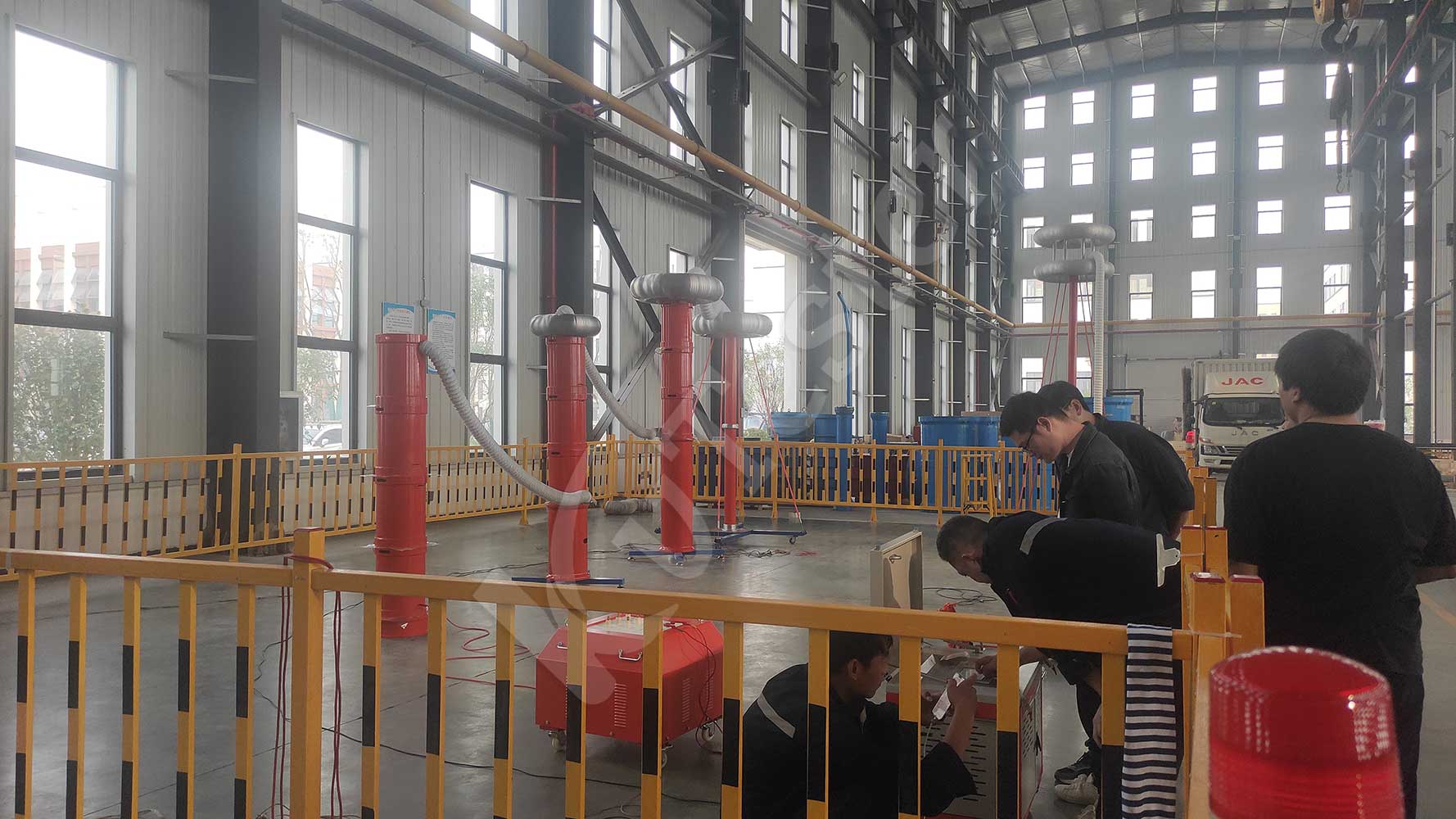1. The host cannot find the resonance point.
Reason: The resonance point of the system is outside the output frequency range of the host; System wiring error;
The system is not reliably grounded; High voltage sampling feedback signal open circuit or unreliable connection; The test sample has a malfunction.
Exclusion method:
① Check the reliability of the grounding device and whether there are any disconnection points in the grounding connection wire;
② Check the continuity of the high and low voltage coils of the excitation transformer;
③ Check the continuity of each reactor;
④ Check the continuity of the signal line of the voltage divider;
⑤ Check the continuity of the high and low voltage capacitor arms of the voltage divider;
⑥ When the device is boosted, there is no resonance point, and it is necessary to check the on/off of the compensation capacitor;
2. Host reset.
Reason: Fluctuations in the power supply of the host; External strong magnetic field interference; The host is not reliably grounded;
3. A low Q value means that the voltage cannot rise or does not rise high.
Phenomenon A:
① The tuning curve is a curve with lower peaks;
② During the experiment, the primary voltage is high but the high voltage is low. Even before reaching the test voltage, the primary voltage has already reached the rated voltage, and the circuit automatically steps down;
Reason B:
① The capacitance of the reactor does not match that of the test sample, and the resonance point has not been accurately identified;
② The sample loss is high and the system Q value is too low;
③ The high voltage output voltage of the excitation transformer is low;
④ The high-voltage connecting wire is too long or does not use a high-voltage discharge line
C exclusion method:
① Connect the compensating capacitor to the test circuit and increase the circuit capacitance;
② Connect multiple reactors in series as much as possible to increase the inductance of the circuit;
③ Increase the output voltage of the excitation transformer;
④ Dry the test sample to improve its insulation strength and reduce active losses in the circuit;
⑤ Generally, when the equipment outputs high voltage, high-voltage discharge lines are used, or ordinary high-voltage output lines are changed to shorter connections, generally not exceeding 5 meters.
4. Power supply tripped.
Reason: Short circuit in the resonant system circuit

The ZCVF-A series variable frequency series resonant withstand voltage test device adopts the method of adjusting the power supply frequency to achieve resonance between the reactor and the tested capacitor, thereby obtaining high voltage and high current on the tested object. Due to its low required power supply, light weight and small size, it has been widely praised and applied at home and abroad, and is a new method and trend of high voltage testing. This device is mainly designed for AC withstand voltage testing of cross-linked cables, hydroelectric generators, main transformers, busbars, GIS, etc. It has a wide range of applications and is an ideal withstand voltage equipment for high-voltage testing departments and power installation and maintenance engineering units at the local, municipal, and county levels. The equipment mainly consists of a variable frequency control power supply, an excitation transformer, a reactor, a capacitive voltage divider, and a compensation capacitor (optional).
Kvtester Electronics Technology Co.,Ltd. is a high-tech enterprise specializing in power testing, testing, research and development, production, and sales of testing equipment. It has been engaged in the electrical testing industry for many years, and its products are of high quality. We welcome customers to come and purchase. Service hotline: 0086-27-81778799, to learn more, visit the official website: www.kvtester.com





